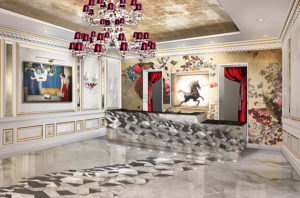 The interior of hotel rooms, as well as hotels’ general design, affects not only the overall clients’ and partners’ perceptions but sales. And as a result, it influences the total financial performance of the hotel complex as a whole.
The interior of hotel rooms, as well as hotels’ general design, affects not only the overall clients’ and partners’ perceptions but sales. And as a result, it influences the total financial performance of the hotel complex as a whole.
Let’s take a closer look at how designers make hotel rooms so attractive and comfortable.
- The Building style and its location
As a rule, when decorating hotel rooms and the hotel in general, designers start from the location. Surely, you have already noticed that the hotel surrounded by a forest has natural wood in the interior, and most often panoramic windows.
If the hotel is located on the seaside or in a resort, then it is often decorated in soft, neutral colors creating a calm and relaxing hotel atmosphere with various hotel outdoor furniture and terraces.
If the hotel is located in a city center, then it is furnished quite minimalist and modern. Such hotels are usually popular with businessmen and are also equipped with conference rooms.
If the hotel building is old and classical, then the rooms are decorated in the appropriate classical style with a predominance of gold.
- Multilevel lighting
You have probably noticed switches with different modes in hotel rooms. Pleasant diffused and soft light creates a feeling of coziness and comfort. When developing the interior and furnishing the rooms, designers always carefully think over the lighting and rely not on ceiling lusters, but on sconces, floor and table lamps.
- The perfect Bed linen
If you didn’t attach any importance to this point, then know that the bed linen in hotels is white. White linens are standard in all hotels around the world and there are several reasons why:
- Firstly, it is associated with cleanliness and gives guests confidence in the hotel.
- Secondly, the same linens make sorting easier when washing.
- Thirdly, white bedding is versatile. It fits into all interiors and, moreover, visually enlarges the space.
- A little luxury
To emphasize the atmosphere of richness in the luxury rooms, the designers use gold and specific colors. For instance, purple is often seen in the interiors of expensive rooms (suites) in five-star hotels. Other popular ‘luxury’ shades are blue and chocolate.
As a rule, this is more about classical style design, but the Art Nouveau and High-Tech styles are present in numerous hotels as well. Remember that a lot depends on the location and concept of the resort itself.
- A bed and its size
Certainly, a special place is given to the bed. The bed is the center of attention and attraction. According to statistics, most guests, after checking in, first sit down on the bed and estimate it. And that’s why hotel room designers pay special attention to this point. They also use some tricks:
- the bed is located near the entrance or in the center of the room;
- there are always a lot of pillows on the bed. Typically 4 pillows are for a double bed, 2 – for a single one;
- beautiful headboard or color highlight to separate the sleeping area (bedspread or wallpapers);
- separate lighting for the sleeping area (sconces or bedside lamps).
- A Bathroom
Yes. Definitely. It is obvious. It is essential. Another place to which guests have increased demands is the bathroom.
Tourists insist that the bathroom is the face of the hotel. Serviceability of plumbing, freshness and softness of towels, cleanliness of surfaces – these are self-evident criteria that greatly affect the image of any hotel. But in a really excellent hotel, the bathroom is beautiful and well designed. Often, it is even more pretty and luxurious than the room itself.
- Colors
This part has already been mentioned in the previous points, but it is worth paying special attention to this. Coziness and comfort in a hotel room are also created by colors that don’t irritate the eyes.
Usually, designers don’t use bright colors in the hotel rooms’ interior, since their effect on guests is impossible to predict. Most often, the interior color scheme consists of 2-3 neutral and soft shades that visually enlarge the space. However, textiles (curtains, bedspreads, pillows, carpets) and decor items & accessories can add brightness.
So you have learned the top 7 secrets of hotel room design that make your stay at the hotel as comfortable and cozy as possible. All comfort doesn’t depend on these points. Location (seashore, center of a resort or metropolis), noise level, level of service, cleanliness, cuisine, and a number of other meaningful factors also play a significant role.
